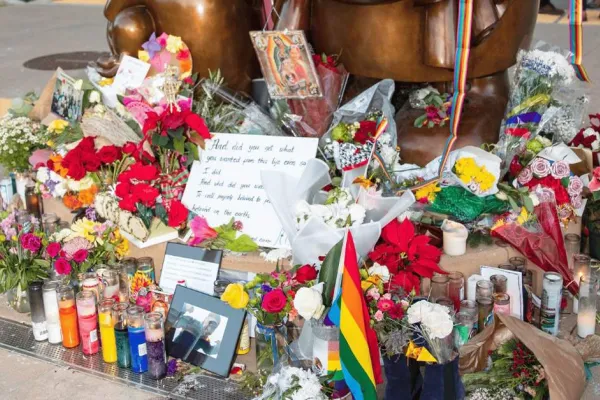Update to Local Government SHBP Members

Dear Local Government and County Members,
The Coalition of unions bargaining with the Governor’s office and Legislative leadership were unable to reach an agreement that would lower health benefit premiums and provide relief to taxpayers. No further negotiations are expected.
On September 14th, the State Health Benefits Commission (SHBC) voted to approve increases in excess of 20% to health benefit premiums. These increases are set annually by the State’s actuary, Aon. It is important to note that there are 3 management representatives and 2 labor
representatives on the SHBC and none of the labor representatives voted in favor of the increase.
The public sector unions were not notified of the proposed increase until mid-July, at which time we requested detailed information that would hopefully explain the unprecedented increase, an increase more than double the national average of 6-9%. The information we were provided was mostly superficial and did not provide the sort of detail we needed to understand the reasons for the increase. According to the State, it was due to something they were referring to as a “Covid bump”. They said this occurrence was due to the fact that during the first year of the pandemic, people did not go to the doctor as frequently and only emergency surgeries were being performed. The 2nd year there was a steady increase in usage and last year the elective surgeries that had been put off the last two years created a higher-than-average number and there was a sharp increase in urgent care, most likely due to doctors being overwhelmed and mandatory Covid testing.
The public sector unions formed a coalition and demanded joint bargaining according to a re-opener that the increase triggered in the state worker contracts. We attempted to engage the State to also discuss local government health benefit premiums at that time but the State refused to mix the two together citing that there was not a similar requirement for them to do so.
After we reached a settlement with the State, our coalition pressed the State to work with us in finding a way to provide similar relief to local and county government workers and taxpayers. The State initially told us that they believed this to be an issue that the Legislature must deal with since towns and counties each negotiate their own contracts with the unions. We didn’t fully accept that response but we reached out to Legislative leadership to engage them in talks.
They were reluctant, seeing this as interference in collective bargaining. However, it was not possible for the unions to negotiate a solution town-by-town and county-by-county. Instead, we waged a public campaign calling on the Governor and the Legislature to provide the towns and counties with $330 million dollars that would provide local and county government workers and employers the relief needed to prevent a tax increase and lower the increased premiums for workers to 3%, the same as the state workers. The State has a budget surplus of about $6.5 billion dollars and Covid money too. To amplify our message, we held weekly rallies, used digital media, set up a patch through phone system so that union members and the public could call their legislators and Governor Murphy, and set up a website that made it easy to email them too.
Although in November we were finally getting some meetings with representatives from the State, they were simply not productive because there were no decision-makers in the room. It was not until January that serious meetings were held with high-level representatives from the Governor’s office, the Senate President’s office and the Assembly Speaker’s office and Pensions and Benefits.
They started out only offering $100 million in funding which was not enough. Later they told us they wanted to make a 2-year deal and would put up a total of $250 million over the 2 years. In exchange for that, they wanted the State Health Benefits Plan Design Committee (PDC) to come up with a total of $150 million in net recurring savings. $35 million would need to be identified by April 1st and realized by the end of PY23. The remaining $115 million would need to be identified by June 1, 2023 and realized by the end of PY24. In addition, Legislative Leadership did not want to be called upon to provide health benefit premium relief in the future so they wanted us to agree that if the health benefit premiums rose more than 150% of the medical inflation rate in a given year, the PDC would have to come up with more plan design changes, without saying exactly how much savings they wanted. They wanted this to be a process in place for the next 10 years.
The PDC is made up of 50% management and 50% labor representatives. If the sides couldn’t agree on what savings would be used, an independent arbitrator would be tasked with taking 50% of the proposals from each side, which most likely would mean 50% of the savings would come from cost shifting to enrollees.
Coming up with that amount of money on that time schedule would be nothing short of a miracle. Yet we were willing to commit to it if the State agreed to provide the PDC with the information they and we believe they would need to come up with cost savings, with the goal of avoiding cost shifting to enrollees, and we wanted bi-monthly PDC meetings scheduled so we could be sure they had adequate time to do the work. We could not agree to a deal without these things because the risk to you would be too great. Without the information, we were at risk of who knows how much costs shifting to enrollees and plan design changes that could dismantle the plans piece by piece.
Another problem was that a town or county employer did not have to apply, or they could apply for just one year meaning we’d still be on the hook for the $150 million in savings and we could have members who were not receiving relief. Towns and counties had also begun dropping out of the SHBP and we wanted an agreement that if 10% of the total local government enrollees dropped from the plan that the $150 million would be adjusted accordingly. They wanted a higher amount.
In the end, the risk for two years of relief was too much. We know we will be faced with a similar increase next year. The union coalition will work with the labor representatives on the SHBC and PDC to find ways to diminish the impact of this to enrollees but as was mentioned early, we are limited due to a lack of data and information. We will continue to explore our legal options to fight for the information the PDC needs and we will continue to fight publicly for transparency in healthcare contracts in the SHBP.
We have also formed a coalition with other unions and community partners to go after hospitals for price gouging. We believe that higher costs are being charged to patients with insurance and that hospitals are being paid different amounts by Horizon for many procedures. Although cost is not often a consideration in choosing a doctor or medical facility, frequently you could get the same quality of care at a lesser price but you wouldn’t have any way of knowing because no one is provided the cost for hospital procedures or care in advance. It is the only service purchased by people that works in this way.
The cost of healthcare is a national crisis. It should be a right, not a privilege. The cost is always going up and we have very little, if any, control over it. It is always an imposing factor when we go to the bargaining table and attempt to bargain wage increases. Over the coming months, we will be engaging members in discussions over health benefits so that you will have a better understanding of it. We will continue to stand together and fight for affordable quality healthcare.
In Solidarity,
Fran Ehret
CWA NJ Area Director
CWA Local 1040 Announces the Carolyn C. Wade Memorial Scholarship Fund!
UPTE-CWA Demands Safety and Transparency After Member’s Murder



